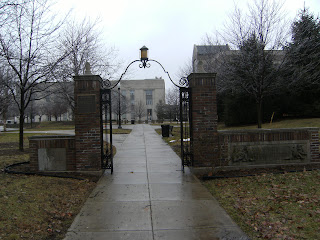
The Pioneer Village at Fowler Park is a place for locals and tourists alike to take an enjoyable step back in time. The village consists of 14 buildings plus a smokehouse, log barn and a working gristmill. The log cabins located here date back to the early and mid-1800's. They were taken from their original location and rebuilt in the park. Various times throughout the year, mainly in the summer, Pioneer Days are held in the village. These days consist of many workers and volunteers coming together to recreate the pioneers in the 1800s. During these days, the visitors will often see cookies being baked over an open hearth, log hewing, candle dipping, sheep sheering, and many more activities.
Besides the unique Pioneer Village, there are many other attractions at Fowler Park. The park is located on 400 acres of land in southern Vigo County. Also included at the park is a wilderness area, four lakes, a campground, picnic areas, playgrounds, and four miles of trails. So, as the warm weather and summer days come closer, the Pioneer Village and Fowler Park may be good destinations to go and check out!







































